AUGUST 12 , 2025


AUGUST 12 , 2025

By Jonathan Trager
Introvert Susan Cain addressed an audience of thousands at the ASAE Annual Meeting on August 11 about the nexus of temperament and leadership.
During a Q&A with interviewer Holly Ransom, the bestselling author of Quiet and Bittersweet pointed out that introverts and extroverts actually have differences in nervous systems. While introverts are more prone to
By Jonathan Trager and Todd McElwee
During the ASAE Annual Meeting at the Los Angeles Convention Center, USAE asked leaders of destination organizations to identify something they believe the industry is doing well and something the industry needs to do better or address. A representative sample of the responses follows.
Leonard Hoops, President & CEO, Visit Indy Strength: “When people gather, we make the world a better place. That’s kind of Humanity, 101, and the meetings industry and associations both help facilitate that. I’ll give a specific example of having my son [who has cerebral palsy]. When we host a physical therapy association, and I see physical therapists and
over-stimulation, extroverts can often feel under-stimulated.
“Psychologists talk about how introverts and extroverts are the north and south of human temperament,” said Cain. “What they’re really telling

By Todd McElwee
When Magic Johnson first retired from the NBA in 1991, he departed as the league’s all-time leader in assists at 9,221. Never did he lead the league in scoring, but the Los Angeles Lakers’ Hall of Fame point guard did set the pace for assists four times while winning three MVPs.
For much of the 1980s, one could have argued Johnson was the best basketball player in the world. Yet Johnson always looked to make everyone around him the best they could be. The results are unarguable—the Showtime Lakers won five championships during his career.
As Chairman and CEO of Magic Johnson Enterprises—an investment conglomerate that focus primarily on ethnically diverse and underserved urban communities—Johnson now seeks to bring the best out of the communities his company works with.
Conversation with ASAE Chair Heidi Brock, President & CEO, American Forest & Paper
The ASAE Annual Meeting & Exposition is a time for work and reflection for Heidi Brock. As her tenue leading the ASAE Board of Directors winds down, Brock took the time to share with USAE some of what has been achieved and some of what she has learned during the past year.
USAE: What accomplishment will you remember the most fondly from
your time as Chair?
Brock: It’s hard to believe how quickly the year has gone! Serving as Chair of the ASAE Board truly has been an extraordinary and rewarding experience. It has given me the opportunity to work alongside a remarkable group of volunteer leaders who care deeply about ASAE and are fully committed to ensuring its continued success as the
continued from page 1
us is we’re born with these different types of nervous systems and they shape so much of the way we work, we live, we love, the way we make decisions, and the way we work together in teams.”
Regarding creativity, psychologists have found that the most creative people are ones extroverted enough that they and share ideas but also introverted enough to withstand the solitude that idea generation requires, Cain said.
“So,
“So, if you’re creating a culture where no one gets to put their heads down, be silent, be alone, you are losing a huge amount of creativity,” she noted.
Management found that in a typical group meeting, only a few people do most of the talking, so approaching an introvert before a meeting starts and asking if it’s okay to include that person in the conversation is a good idea, said Cain.
Conversely, introverts should prepare in advance what to say and then nudge themselves to speak up early in a meeting, she added.
if you’re creating a culture where no one gets to put their heads down, be silent, be alone, you are losing a huge amount of creativity,” she noted.
As a public speaker who’s also an introvert, Cain said she schedules her days so her nervous system is in equilibrium for as much of the day as it can be. For example, interspersing time with friends with time alone to write.

A study by the Kellogg School of
continued from page 1
And during the Opening Keynote of the ASAE Annual Meeting & Exposition on August 10, he shared examples of the successes he’s experienced thanks to a socially conscious entrepreneurial attitude.
“You’re talking about success,” he said. “That’s what it’s all about. See, when you go into the inner cities, you have to be successful with the business, but also creating opportunities for people who live in those communities.”
Johnson lit up the massive ballroom, both literally and figuratively, when stepping onto the stage. Flashing his trademark smile, he greeted the crowd and quickly said, “I’m not a stage person.” He then made his way onto the floor, had the house lights turned on so he could see everyone, and quickly engaged with members of the audience, which he continued to do throughout the address.
Following his playing career, Johnson decided he wanted to invest in the nation’s poorest neighborhoods. He built a movie theater in the inner city of Los Angeles while he met with leaders from the Bloods and the Crips. As a leader, he took the initiative to find a solution to the violence that plagued the gangs—not to run away or ignore the issue.
“I said, ‘Listen, this theater happens to be off limits. You can come, your family can come. You can come and enjoy yourself, but you cannot create any violence or any trouble for yourself or for others,”’ he said. “And they decided to do that. And the one thing
“I structure every single one of my days really intentionally in that way, and I think that’s something we all should be doing,” she said.
they asked me for in return was, ‘Could you give me and our group jobs?’ So, we created 15 jobs for both the Crips and the Bloods—15 and 15, 30 jobs to help build it on the construction site. Now what I want you to clap for is 24 of them stayed on permanently…That’s changing communities.”
Johnson added the theater was in the top 10 highest of highest grossing theaters in the nation.
A story on meeting with Starbuck CEO Howard Schultz about placing Starbucks in inner cities followed.
“I went up to Howard Schultz, Chairman and CEO of Starbucks, and said, ‘Hey, you see my numbers that I’m doing in my movie theaters in the inner cities, Black folks and Latino folks, we love Starbucks and coffee too. So, let’s build some in the inner cities of America, because we have to drive an hour outside our community to get a cup of coffee and stuff—and definitely a cup of Starbucks coffee.’”
Johnson added he became the first person in the history of Starbucks to own and build 125 Starbucks, creating thousands of jobs for Latinos and African Americans to work right in their community and be able to take care of themselves and their families.
Continuing with the Starbucks theme, he touched on the adaptably effective leaders must possess.
“This is very important, because you know, when you go to the regular Starbucks, you have scones [but] we don’t know about scones in my community,” he said. “We had to take the scones out of the Starbucks that I built. And also, we had to take the elevator music out of the Starbucks, you know. So, I had to put in Beyonce and Michael Jackson and Prince, and then
People mistakenly assume there’s a correlation between ambition and extroversion, said Cain. She suggested that introverts who want more of a leadership role find a mentor in the organization and let that person know what their hopes and intentions are.
I had to put in sweet potato, pie, peach cobbler and things that resonate with the Urban consumer.”
His stores generated higher per capita returns than others in the Starbucks’ family.
Johnson’s eternal rival, Boston Celtics’ Hall of Famer Larry Bird, came up throughout the discussion, with Johnson playfully making fun of his great friend whenever he could. He discussed how the rivalry with Bird made him better. The two truly connected as friends during a Converse shoe advertisement shot in French Lick, Indiana, in the mid-1980s, and Bird invited him to his mother’s house for lunch. But the atmosphere on set had been tense.
Ultimately, introversion and extroversion is just a form of yin and yang, Cain said.
“We know that the best performing teams are made up of introverts and extroverts,” she said.

Johnson said: “Now, how I’m going to turn down his mother? Right? I said, ‘Okay, Larry.’ So, I go up to the house. He’s down at that end, and I’m down at this table. So, she’s bringing in the food. So, as she brought her last dish, she goes, ‘Larry, did you tell him?’ Larry said, ‘No, Mom, you tell [him]. So she turned around and said, Magic, [you’re] my favorite basketball player.”
The crowd erupted in laughter.
Calling Chicago Bulls’ Hall of Famer Michael Jordan the greatest player ever, Johnson shared the story of Jordan’s iconic mid-air hand switch layup in the 1991 NBA Finals and how, he noted, the ball went from left to right and so did Jordan’s tongue—which famously often was out when he played.
He went on to show how at the peak of his powers in 1992, Jordan deferred
to him and Bird as captains of the Dream Team.
“When he did that, everyone left their ego at the door,” Johnson said.
Michelle Mason, FASAE, CAE, President & CEO, ASAE, who got a shout out from Johnson, discussed the work of ASAE’s Tomorrow’s Workforce Coalition, and how the recent tax bill included the Freedom to Invest in Tomorrow’s Workforce Act. She also celebrated 25 years of the Diversity Executive Leadership Program (DELP).
In addition, Adam Burke, President & CEO, Los Angeles Tourism & Convention Board, discussed the importance of events such as ASAE for his community and how they help to tell the story of the meetings industry’s significance.
continued from page 1
scientists and companies that are involved in that world gathering, and they’re all like collectively networking, but they’re also advancing the profession, profession, and when they advance their profession, it helps, ultimately, people like my kid, and helping my kid helps me. And so, you think about just all these connections that happen from the meetings industry and the association world to make our world a better place—to live, work, play. That’s what I love about the industry.”
Publisher & Executive Editor 1982 – 2021 Anne Daly Heller
Publisher-Emeritus Ross E. Heller ross@usaenews.com
Publisher James Heller james@usaenews.com
Associate Publisher Todd McElwee todd@usaenews.com
Managing Editor Jonathan Trager jon@usaenews.com
Hotel Editor Jordan Bradley jordan@usaenews.com
Creative Director Diane Nichols dkn@usaenews.com
Graphic Designer Danielle Erbe
Marketing & Circulation Director Christy Pumphrey christy@usaenews.com
To
to subscribers via e-mail. To receive another copy, please contact our circulation dept. at christy@usaenews.com.
Challenge: “We’re at a stage in the political ideological world, particularly in the United States, but it’s really all over the world where, where it’s affected even our industry, where people can’t decide if DEI is okay or not okay. Is it okay to exclude certain things or to not emphasize certain things? I think there’s just a challenge right now with our industry that it is ultimately subject to heavy influence from the United States, Federal Government, and I think it’s challenged how we do what we’re supposed to be doing, which is kind of advancing the world with the work we do.”
William Pate, President & CEO, Atlanta CVB
Strength: “I think [meetings] do a really great job of bringing together all the associations into a really strong community. And you see that here on the floor, because of the diverse number of customers and prospects that come through from all kinds of associations. And as a convention city, all that business is important to us, right? Because, you know, once you get a really big convention, you got to get some medium sized and smaller conventions to completely optimize your city. So, to be able to talk to all of the diverse associations that are under ASAE, is really a great opportunity for us, particularly because we’re a convention city, but I think it is for everybody else here too.
Challenge: “I think associations are carrying that voice for a lot of organizations, and they’re very engaged, but we need to keep that engagement. That’s a lot of what associations do is they spend a lot of time up on the hill. They’re advocating for their particular members, but they’re really also advocating in many ways for all of business, right? We need that voice. We need that voice at the federal level now more than ever.”
Peggy Williams-Smith, President & CEO, Visit Milwaukee
Strength: “I think the meetings industry sets the standard by traveling to events. When I go to our events, every single one I’ve gone to this year has had record attendance. All of them have exceeded prior years’ attendance so it means we’re setting the example of what we’d like to see from the rest of the meetings industry, that we need to meet in person to be able to get things done.”
Challenge: “I think continuing to address AI is going to be incredibly important. How we work that into everything we do because it is something that is so new. We need more awareness about what AI will do for us.”
Tammy Canavan, President & CEO, Visit Seattle
Strength: “I think particularly in the United States we are doing a really good job leaning into being proactive and working with clients that have a lot
of uncertainty in their worlds right now. Particularly in the association world there are a lot of organizations that are unsure of what their future looks like, what their funding looks like, and so we as an industry and certainly in Seattle are reaching forward and connecting with those clients and doing the best we can to help support them through that time of uncertainty.”
Challenge: “Overall, I think what we’re doing well is something we could always do more of, and that is always being proactive with our clients and reaching out from time to time when it’s not necessarily a scheduled touch point and asking them how they’re doing and how we can help support them. I think also that as an industry there is an opportunity to be much more conscientious about how we affect the environment and how we support sustainability through the shows that we’re supporting.”
Andy Conklin, Executive Vice President, Visit Cincy Strength: “The ability to really look at groups and conventions from a very high level, the total economic impact. When we want to bring something to a hotel or a destination, looking at more than just what are they doing for the hotel industry and the restaurants, but really having the tools, the data, those discussions to realize it’s more than that. The revenue impact is one thing, but the other thing is jobs, and supporting the jobs, and obviously the tax revenue and showing where that revenue will be spent to improve their lives. So overall the impact of the actual group totaling to the market and acting accordingly.”
Challenge: “This one I think absolutely needs to be a focus: The staffing level. We are going to need more people, more people out of college, more people in the middle of their career, because we have people who are retiring, and we need to have a bench strength of people in the industry— leaders, workers, managers. Because if we don’t have the proper people in all these positions throughout this industry, I think the consumer is going to feel it and see it. So I’d love to see a little more focus and energy and success developing these employees of the future for a long-term career.”
Andrew Ortale, Executive Vice President, Business Events & Destination Experience, Visit Pittsburgh Strength: “I think the industry, more than anything else, what it’s doing is bringing people together to solve issues that are current, that are happening right now. And there’s no better way to do that than when you’re in an association.”
Challenge: “As a destination and as a vendor, one of the challenges that we’re starting to see is there are so many events that are happening
throughout the year, and it’s very hard for us to budget and prioritize, to make sure that we are represented at each event, and also at the same time that we’re showing up in the way that we want to show up without diluting ourselves.”
Nathan Hermiston, Sr. Vice President of Sales & Services, Visit KC Strength: “I think what the meetings industry is doing well right now is after coming out of the pandemic— obviously, that was five years or so ago now—creating the value of being in person. A few years ago, there were a lot of questions if this was even going to exist anymore, and everyone has doubled down and tripled down and that story has completely resonated throughout society. So I think that’s what’s going on great.”
Challenge: “On the other side of the coin, it’s the innovation and not going back to what we were doing before. You’re seeing some of it, but I think it would be fun to see some organizations step out of their comfort zone and reimagine the meeting, because we’ve got a whole generation of future meeting attendees who aren’t as motivated to come to these types of events as they were before. I think we need to really look at the model of what our meetings and gatherings look like to make that resonate better with future attendees.”
Holly Pace, Chief Sales & Marketing Officer, Visit Greater Palm Springs
Strength: “It’s the hospitality industry, so what we do best is hospitality. Connecting with people and creating experiences for them when they’re in our destinations. I think now even more so people want to connect with people, so having in-person meetings and then having that welcoming spirit for the destination I think is what we do really well as an industry.
Challenge: “Social responsibility is something we have to stay focused on. Greater Palm Springs isn’t backing down on our inclusiveness in terms of welcoming people of all different types of backgrounds. I think we need to stay focused on that even though the focus sometimes nationally isn’t that way. I don’t want us to take our eye off the fact that we need to maintain that.”
Artesha Moore, President & CEO, Association Forum
Strength: “Our industry excels at creating meaningful communities— bringing people together to share knowledge, build relationships, and inspire action. We connect people with purpose.”
Challenge: “We must move faster to innovate. Holding onto outdated processes slows us down; embracing new tools, ideas, and models will keep us relevant and impactful.”








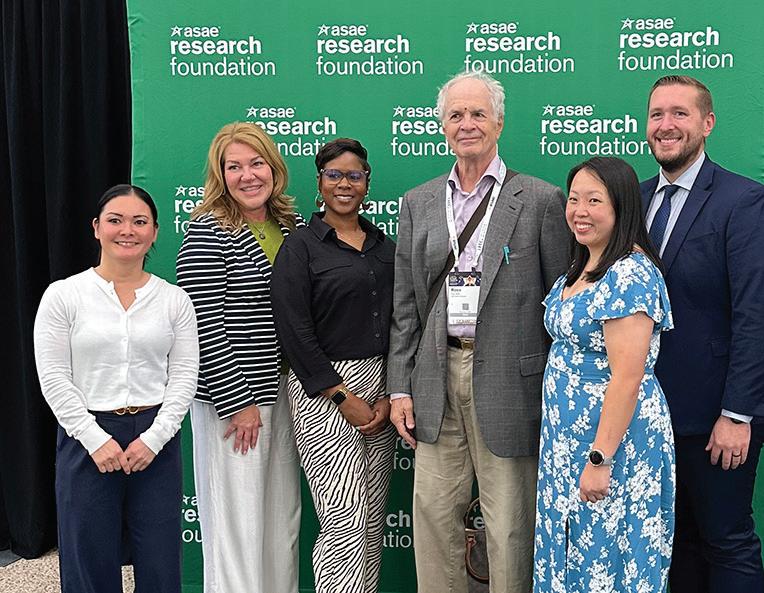

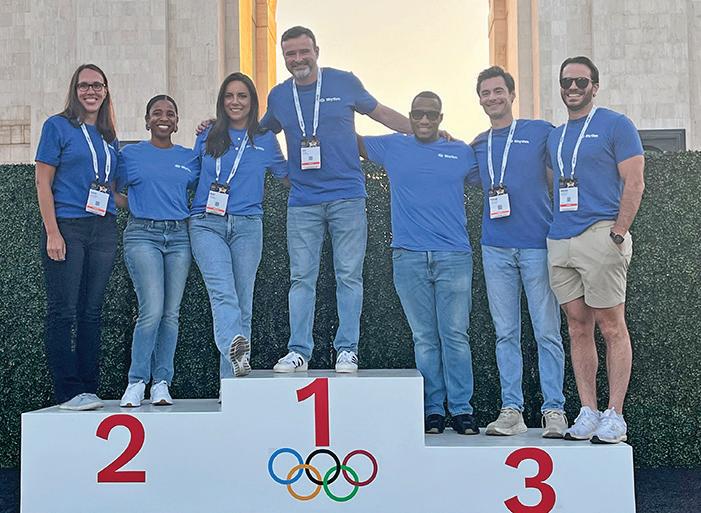
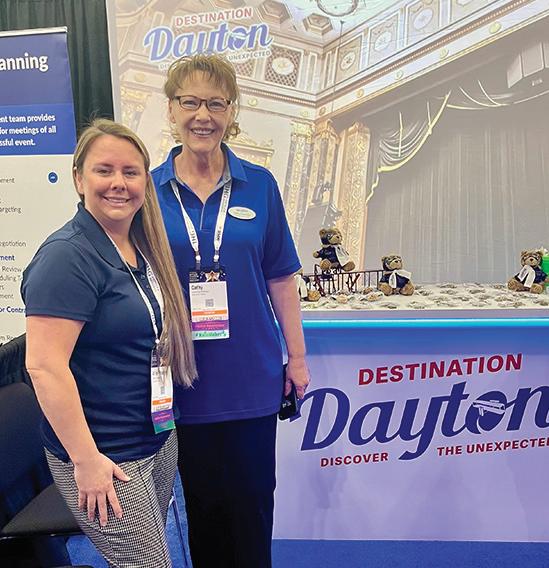
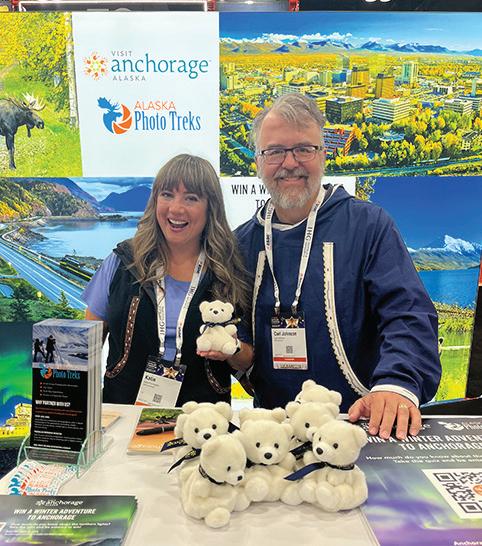

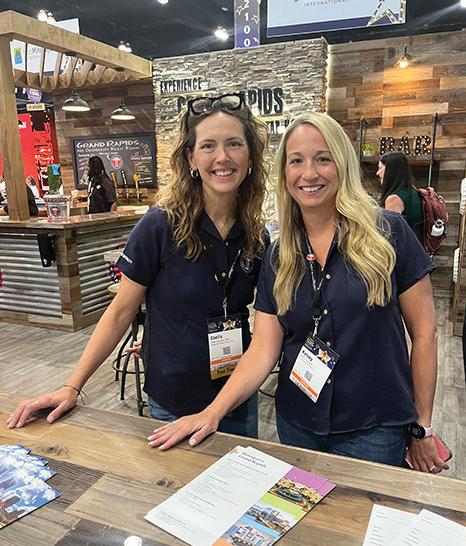



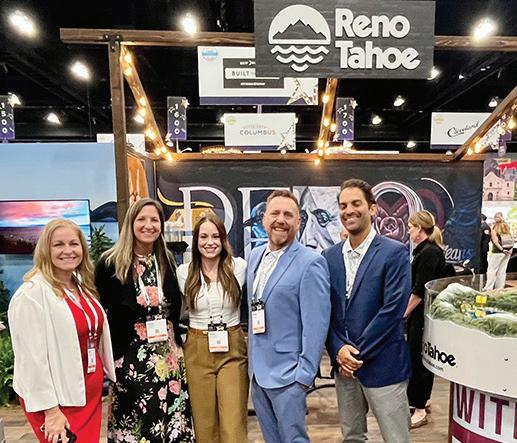

Omaha Hosting Exceptional Boards: Strengthening the Governance Team… ASAE’s Exceptional Boards, a two-day workshop for CEOs and their elected officers to explore strategies for strengthening their working relationship and enhancing the board’s performance, will be held at the The FARNAM, Autograph Collection Hotel in Omaha, from October 6–7. Organizers noted the program is designed for team participation, requiring at least one staff professional and one board leader to jointly attend.
“Designed specifically for leadership teams, it provides an engaging learning environment where CEOs and elected leaders together will gain insight and resources to improve the effectiveness of board operations and create a strong and vibrant governance team,” ASAE said. “It is the one program that coaches you on how to build a board that understands its role, fulfills its responsibility, demonstrates visionary leadership, and ultimately leads the organization it represents to new heights.
The workshop covers:
• Strategies for building a cohesive board
• Roles and responsibilities of the CEO and the board
• Creating an effective CEO/board chair relationship
• Developing a leadership team action plan
“Exceptional Boards offers you a rare opportunity to step away from the day-to-day routine and discover fresh ideas and approaches for
enhancing board leadership,” ASAE said. “You’ll benefit from the facilitators’ knowledge and expertise, but this highly interactive program also engages participants in exercises with their teams. Be prepared to roll up your sleeves and engage in open and honest discussions with your officers.”
Rates are $1,265 for members and $1,645 for others.
The Full Journey: 11-Month Course Coming in October … From October 1, 2025 to August 30, 2026, ASAE will prep professionals interested in the CAE with the Full Journey: 11-Month Course. Registration closes on September 29.
“This immersive 11-month course is designed for CAE candidates who want a comprehensive, structured, and supportive path to exam success,” ASAE said. “With a blend of live expert-led sessions, on-demand content, and scenario-based exercises, this course walks with you from your first study session to exam day.”
The course includes 50 CAE Credits, 20 Hours of Live Sessions, 10 Hours of Study Group On-Demand Activities and 20 Hours of On-Demand Study Content. Costs are $2,500 for members and $3,250 for non-members.
Retired Friends of ASAE … Designed to maintain connections with industry members, ASAE’s membership for retirees runs $150 for five years. Retired members retain benefits such as member discounts on eligible ASAE programs, products, and services, and electronic
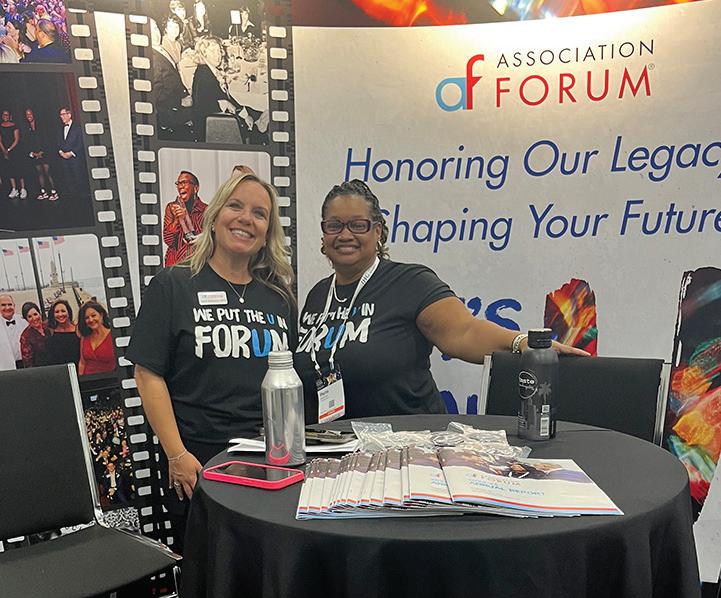
access to ASAE members-only resources and the Collaborate social network.
“ASAE is happy to maintain our relationships with our members for the long term, even into their retirement,” the association said.
“And we know that many retired association professionals want to
continued from page 1
professional home for association leaders.
There have been countless moments of impact and inspiration— rich discussions, thoughtful strategy sessions, and decisions that I believe have positioned ASAE to thrive in the years ahead. But if I had to name the accomplishments that stand out most, two come to mind.
First, this was the year ASAE truly rose to the moment in representing the association community during the federal tax reform debate.
ASAE’s voice on Capitol Hill—on behalf of associations of every kind—was clear, consistent, and effective. I’m incredibly proud that ASAE stepped into that advocacy role with such purpose and strength. They reinforced the unique role associations play in workforce development, the economy, and civil society.
Second, this year marked a major milestone in ASAE’s history: the decision to move to a new office space at 1101 K Street NW after more than four decades in the current building. While we honor what we have all gained from the current location, we can also celebrate the upcoming move as much more than a change in address—it’s a bold signal of ASAE’s commitment to innovation, adaptability, as they create a modern environment that better serves the evolving needs of our members. I’m genuinely excited to see that vision come to life in the months ahead.
It’s been a year of meaningful progress, and I leave this role with a deep sense of gratitude and optimism for what’s ahead for ASAE and the incredible community it represents.
USAE: Has your perspective of board leadership changed during the past year, and if so, how?
Brock : In today’s complex, fastpaced environment, what’s become even clearer to me is that effective board leadership is less about having all the answers and more about fostering the right questions and conversations, the right partnerships, and the right mindset for adaptive leadership.
keep in touch with colleagues. This membership category is open to ASAE members in good standing who are transitioning to retirement and have been involved with ASAE for at least five years.”
Find more on these programs and ASAE’s other offerings at asaecenter.org

In times of rapid change—whether driven by technology, shifting member expectations, or broader societal dynamics—collaboration becomes not just a value, but a necessity. No one individual, organization, or board can navigate these challenges alone.
What I’ve seen this year is how powerful it is when board members bring their diverse experiences to the table, engage openly and respectfully, and work together toward a shared vision.
USAE: Please describe your day at the annual meeting.
Brock: My days at the ASAE Annual Meeting are definitely packed—from early breakfasts; to board, committee, or education sessions; to late evening events — but it is positively one of the most energizing and rewarding weeks of the year.
I’m incredibly grateful to my team at the American Forest & Paper Association and the ASAE team for keeping me on track! ASAE Annual is a true highlight for me—filled with meaningful conversations, new ideas, and connections that I take back and share with my own association.
There’s always something to learn and someone new to learn from. And this year, the meeting feels especially meaningful as I close out my term as Chair. It’s a special moment to reflect, celebrate our progress, and look ahead at the opportunities for our vibrant association community.
By Todd McElwee
Tony J. Fundaro, President & CEO, Philanthropy Southwest (PSW), and his team were searching for something and found the ASAE Annual Meeting & Exposition, with seven staff members attending the event in Los Angeles for the first time.
“The team and I were looking for a larger association community and more content based on best practic-
es for membership organizations,” Fundaro told USAE. “We do an annual conference together as a team and the ASAE experience just felt like it fit.”
Fundaro previously piloted the MPI Foundation so he was familiar with ASAE and its signature event, but became a member of ASAE just this year. He joined PSW in 2019.
“The team is loving it, we feel like the breakouts are right on point,” he


said. “Also, the overall experience in L.A. has been fantastic.”
Founded in 1949, PSW said it is the most enduring association of grantmakers in the United States. It works with community foundations, private and independent foundations, family foundations, corporate foundations and philanthropists. From October 21–24, its 77th Annual Conference will be held at The Broadmoor in Colorado Springs.
“We are the premier philanthropy serving organization in the Southwestern United States, with hundreds of member organizations across the region,” the organization said. “We believe that philanthropy is done best when done collaboratively and with
excellence, and we foster a network across which our members generously help and support each other. We would like to see philanthropy drive meaningful impact on pressing regional issues.”
Fundaro added PSW regularly attends philanthropy-based events that are tailored more to its specific mission and he’s planning on regular ASAE Annual Meeting & Exposition attendance in years to come.
Find more information at www.philanthropysouthwest. org

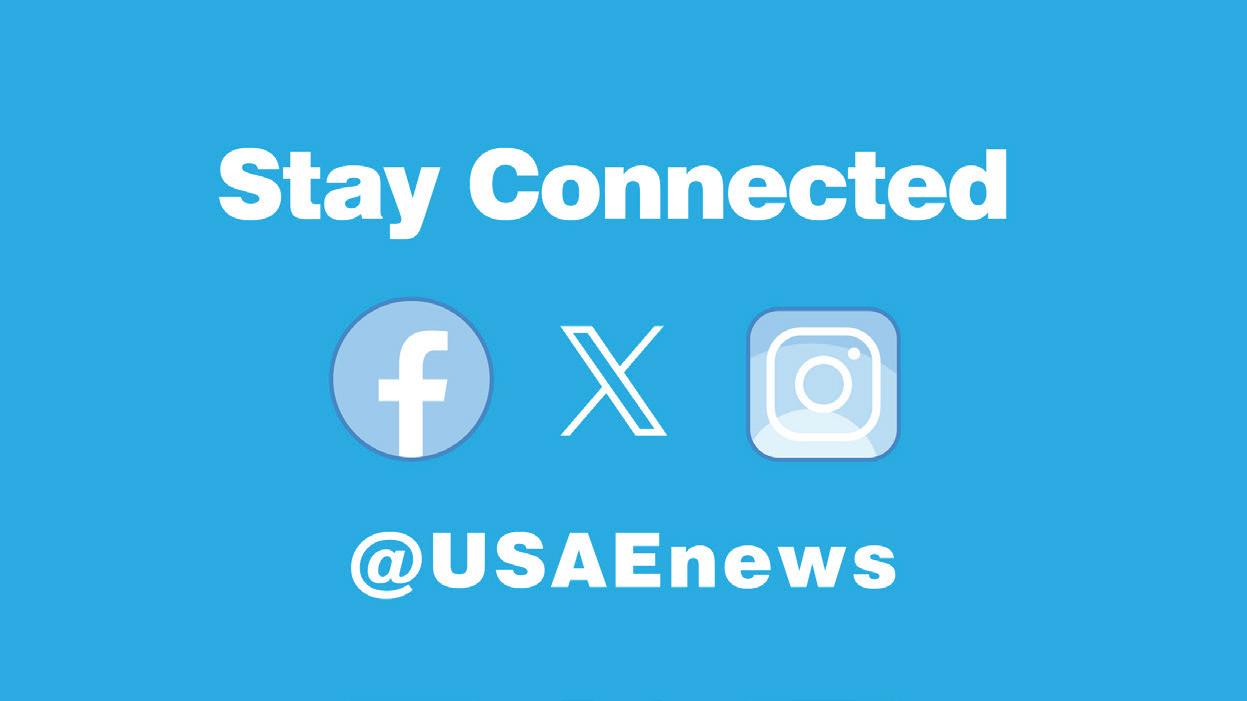

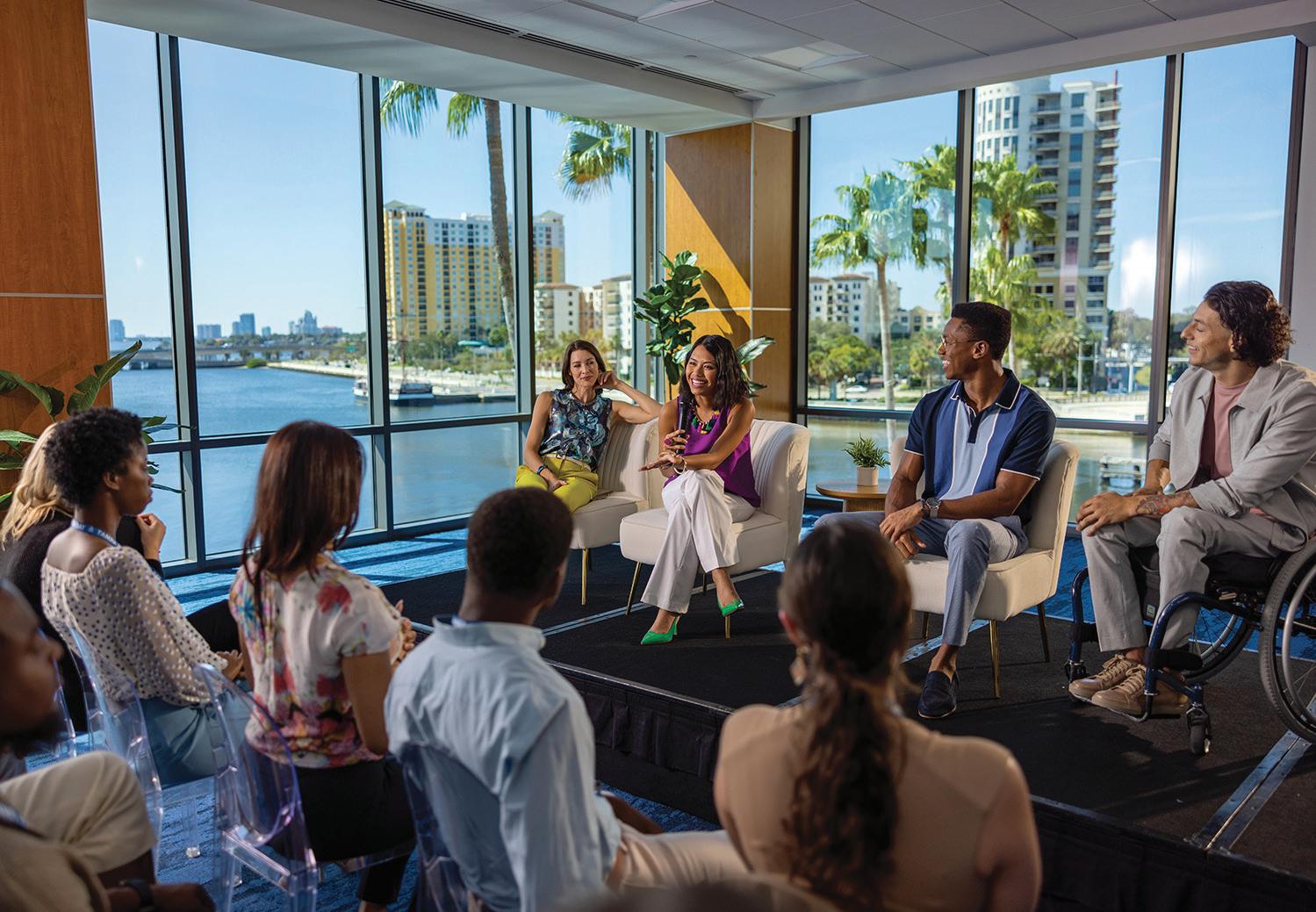
The sun seems to shine a bit brighter when attendees convene in Tampa Bay, Florida. Earning a spot on TIME’s list of “The World’s Greatest Places” and named one of Money’s “Best Places to Travel,” the accolades are only beginning.
With $44.5 million in recent upgrades, the Tampa Convention Center now features a two-level, 18,000-square-foot addition with floor-to-ceiling windows and 18 new meeting rooms—building on a legacy of transforming events into extraordinary experiences. Off-site excursions are easily within reach, thanks to a historic streetcar stop right next door and boat docks lining the nearby riverfront.
Where you stay matter
In a destination designed to impress, accommodations rise to the occasion. Tampa Bay offers more
than 1,500 new hotel rooms, adding to an already robust selection that ranges from chic boutique properties and five-star luxury to trusted name brands. Many are located in the heart of the Convention District or just minutes away, making it easy for attendees to stay close to the action.
Top picks include the 519-room JW Marriott Tampa Water Street, the 173-room Tampa EDITION, and the 345-room dual-branded Hyatt Place/ Hyatt House Tampa Downtown. In total, more than 3,000 hotel rooms are within walking distance of the Tampa Convention Center, with another 8,000 available throughout the nearby Westshore Business District —finding the perfect place to stay is easier than ever.
The crown jewel of your meeting.
The Tampa Convention Center offers 600,000 square feet of total

event space, including 200,000 square feet of exhibit space and more than 84,000 square feet of flexible pre-function space. With 52 meeting rooms—27 of them waterfront—and a 36,000-square-foot ballroom that can be divided into four sections, the venue adapts effortlessly to events of any scale.
When you host at the Tampa Convention Center, Encore brings your event to life with cutting-edge audiovisual services and rigging. Aramark serves award-winning cuisine that fits any occasion. And Edlen provides the foundation for a successful event with temporary utilities and 50+ years of experience.
Save on the best of the Tampa Riverwalk and beyond.
There’s no shortage of reasons to extend your stay in Tampa Bay. At Busch Gardens® Tampa Bay, visitors can go from record-breaking thrill rides to up-close encounters with more than 12,000 animals, all in one unforgettable afternoon. Give attendees the ultimate mix of savings and adventure with the Tampa Bay CityPass® or the Tampa Riverwalk Attractions Pass Fresh tastes to savor.
Like a great meeting, great food
brings people together while giving them plenty to talk about. And Tampa Bay’s award-winning culinary scene does both, with a roster of celebrated restaurants that includes beloved local eateries, fresh Gulf seafood and MICHELIN-starred innovators around every turn.
Celebrated service for air travelers from around the world.
With a new terminal at Tampa International Airport (TPA) opening in 2028 that will add 16 new gates the top rated Tampa International Airport offers nonstop service to more than 80 domestic and 10 international destinations and is located just 15 minutes from the convention center.
Secure Your Event with Confidence—Let Us Cover Your Deposit!
Now more than ever, financial certainty matters. Book the Tampa Convention Center during an eligible period and Visit Tampa Bay will cover your initial deposit at contract signing—ensuring stability as you plan ahead. This exclusive Treasured Savings incentive is in addition to Tampa Bay’s customized bid package, designed to maximize value for your event. Lock in your preferred dates with less risk and more savings—because your success is our priority.
To learn more or start planning your event in Tampa Bay, visit TampaMeetings.com or contact:
Adam DePiro
, Chief Sales Officer, Visit Tampa Bay Phone: (813) 342-4061
Email: ADePiro@VisitTampaBay.com
